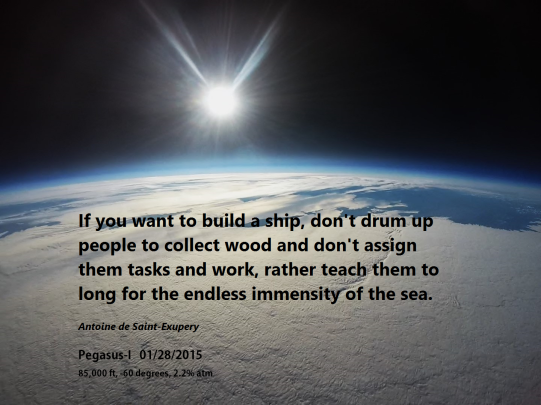The flight of Pegasus II made international headlines with 50 MS FTEs participating in the project to deliver a real-time experience to a global audience from 100,000 feet in the upper atmosphere. The team challenged assumptions about what is possible and made a little history in the process. To that end we successfully had 20+ articles written about the flight, over 8M readers, viewers from 60 countries watching our live video, and thousands of users around the world participating in a real-time flight to near space. Now, we set our goals toward other interesting projects and experiences.
The Pegasus Mission is partnering with North American Eagle (NAE) to help support and promote the attempt at breaking the Land Speed Record. We will run a series of experiments from a high speed vehicle in a remote location and connect this with a global audience in real-time.
Overview
NAE uses a Lockheed F-104 Starfighter with wheels as the vehicle to attempt and break the men’s and women’s land speed record. In less than a few minutes, with afterburners burning 90 gallons of fuel per minute, the vehicle has traveled less than 10 miles and broken the sound barrier. Our experiment onboard the NAE will test our ability to broadcast telemetry live from a rapidly moving object from a remote location and provide this to a global audience. Additionally, we want to the audience with a sense of what it is like to be sitting in the pilot’s seat traveling faster than sound on land.
Part 1 – Experiment
We will be building a small device that captures a minimal set of telemetry within the cockpit of the NAE. This telemetry will be broadcast over a 2-way radio back to our ground station at base camp. The ground unit will be wired to our field gateway, which will then send the telemetry over a portable SATCOM to our operational technology (Piraeus) in the Microsoft Cloud. A Web site connected to Piraeus and receive the telemetry and display the live feed to a global audience. Because of the brief duration of the run, we will leverage our Twitter and Twilio feeds to alert users and keep them informed.
Bonus – If we have enough time, we may enable users to send a message to the NAE over the Web site and capture their message onboard the craft.
This enables us to discover new knowledge in reliable remote and high speed communications with a global audience, which is applicable to wide range of scenarios.
Part 2 – Cockpit Experience
The NAE collects a large amount of telemetry (2048 measurements/second from each of the 28 sensors) to help them analyze the configuration after a run. The telemetry is offloaded after the run through a WiFi network setup on the ground. This means we can access the telemetry very quickly after the NAE has completely its run. A video camera is positioned over the pilot’s left should that shows their view of the run. We will break the telemetry down to into a usable pilot-like experience, e.g., throttle position, stick position, speed, weight on wheels, nose angle, etc., etc., and couple this will the video to provide a synchronize experience shortly after the run is complete. Once completed will we upload over our SATCOM to the MS Cloud and users will be able to experience a virtual “ride of your life” with the video and virtual cockpit design over a Web site.
North American Eagle – expected test run Aug-Sep 2016
Twitter
@PegasusMission and @landspeed763
Dare Mighty Things 🙂
